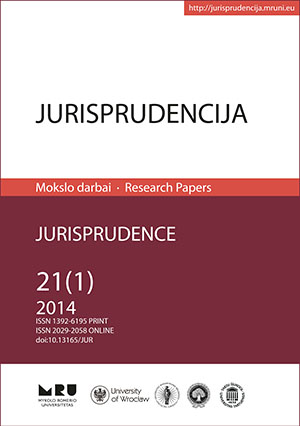The European Concept of Minorities. Development and Impact (Part II)
The European Concept of Minorities. Development and Impact (Part II)
Author(s): Arndt KünneckeSubject(s): Law, Constitution, Jurisprudence
Published by: Mykolas Romeris University
Keywords: international law; human rights; minority rights; concept of minority; European Union
Summary/Abstract: Within the EU, the concept and rights of minorities play an important role, especially within the frame of the Copenhagen political criteria, which set the essential conditions that all candidate countries must satisfy to become a member state. According to these criteria, the candidate countries have to provide stability of institutions guaranteeing democracy, the rule of law, human rights and respect for and protection of minorities. How and according to which criteria minorities within the EU are established and what kind of rights they have within the EU are examined in this essay, taking into account the historical development of the European concept of minorities and the content of the relevant documents in international law. Even within the EU, a universally recognized and binding concept of minorities does not exist. To determine which minorities are supposed to be protected, some regularly applied characteristics have been developed within the political process and by some authorities of the EU. In spite of a lack of codification, these characteristics can be considered to be constant and continuous criteria of a European minority definition. These are the following criteria: (1) numerical inferiority, (2) non-dominant position, (3) distinctive ethnic, religious or linguistic characteristics, (4) citizenship of the country of residence and (5) explicitly made known sense of affiliation and solidarity. This means concretely that a minority can only be (1) a group of persons being numerically smaller than the rest of the population, (2) which may not have a dominant position in the state in the form of a sole right to make decisions, (3) which at least has to show a specific ethnic, religious or linguistic characteristic distinguishing them from the rest of the population, (4) members of which have to be citizens of their country of residence and (5) who have declared their membership and solidarity with their group of people. These five criteria have to be fulfilled cumulatively in order to be able to qualify a group of people as “minority”.
Journal: Jurisprudencija
- Issue Year: 21/2014
- Issue No: 1
- Page Range: 59–88
- Page Count: 30
- Language: German

